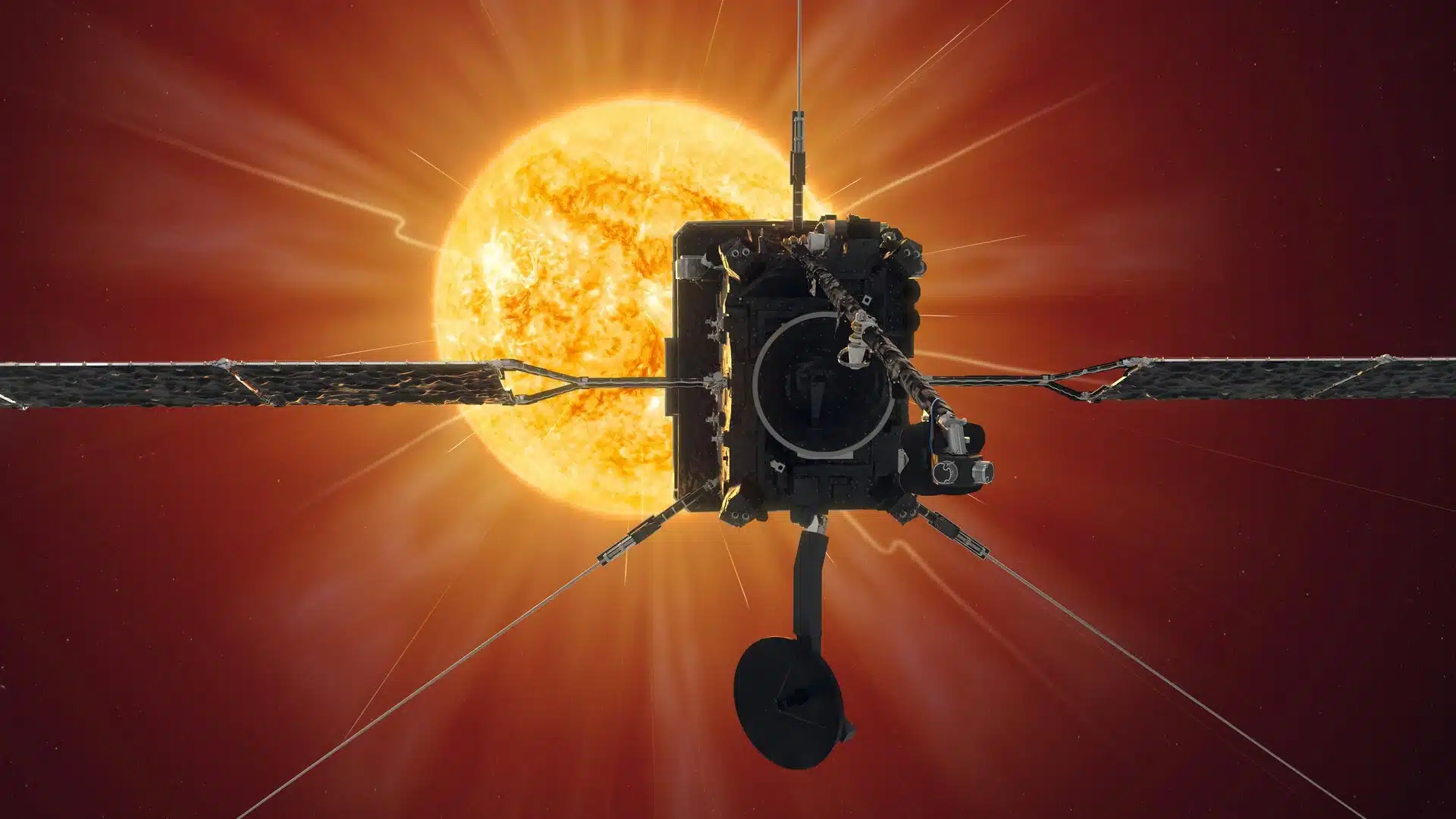Solar Orbiter Achieves Historic Close-Up of Sun’s Southern Hemisphere

The European Space Agency (ESA) has unveiled a groundbreaking image of the Sun’s south pole, captured by the Solar Orbiter spacecraft on March 23, 2025. This remarkable view, which was made public on June 11, 2025, offers a unique perspective of the Sun that has never been documented before. The Solar Orbiter’s recent adjustments to its orbit allowed it to tilt 17 degrees beneath the solar equator, revealing this previously elusive area of our star.
Unprecedented Views of the Solar Pole
Carolle Mundell, ESA’s director of Science, emphasized the significance of this achievement, stating that it marks the first time humanity has seen the Sun’s pole. The newly released images showcase the solar pole in both visible and ultraviolet wavelengths, utilizing three of the Solar Orbiter’s ten instruments. These instruments captured a vibrant array of data, illustrating the complex tangles of the Sun’s magnetic field. The images reveal the dynamic nature of the solar atmosphere, where high-velocity movements of particles contribute to the solar wind.
Understanding Solar Activity and Magnetic Fields
The data collected by the Solar Orbiter is expected to enhance our understanding of solar wind and space weather, as well as the Sun’s 11-year activity cycle. The Solar Orbiter’s Polarimetric and Helioseismic Imager instrument has documented the Sun emitting flares at an accelerated rate during its peak activity phase. This chaotic arrangement of magnetic fields is temporary, flipping every 11 years, signaling the transition from maximum solar activity to a quieter solar minimum. As the solar minimum approaches, which occurs after five to six years, the Sun’s poles will exhibit a single type of magnetic polarity.
Future Missions and Insights
In the coming years, the Solar Orbiter will continue to explore the Sun from various angles. With assistance from Venus’s gravitational pull, the spacecraft plans to tilt its orbit to 24 degrees in December 2026 and 33 degrees in June 2029. These adjustments will enable scientists to study the Sun from different perspectives, deepening our understanding of its magnetic field, solar wind, and overall activity. This ongoing research promises to unveil more secrets of our closest star, enhancing our knowledge of solar dynamics and their impact on space weather.
Observer Voice is the one stop site for National, International news, Sports, Editor’s Choice, Art/culture contents, Quotes and much more. We also cover historical contents. Historical contents includes World History, Indian History, and what happened today. The website also covers Entertainment across the India and World.

